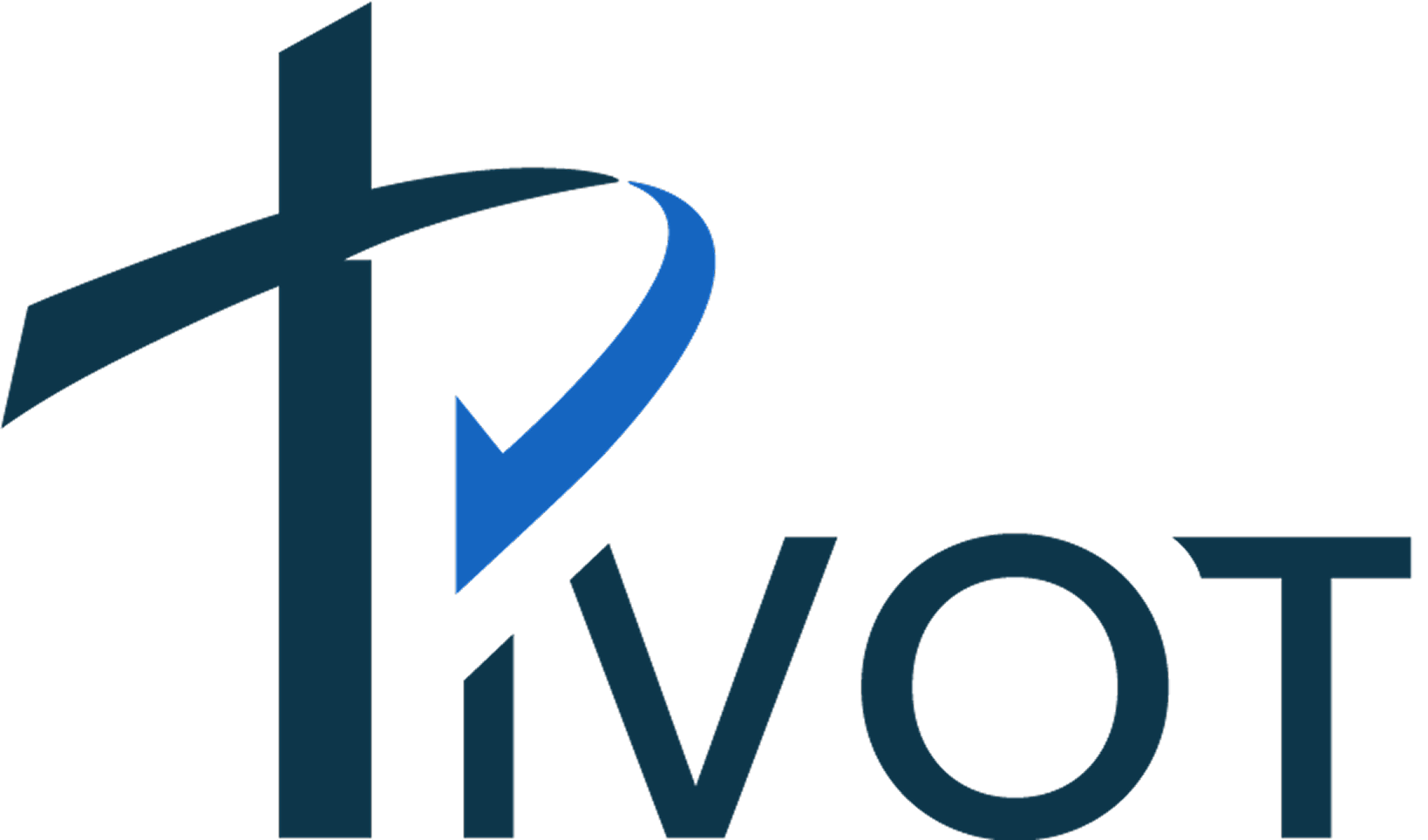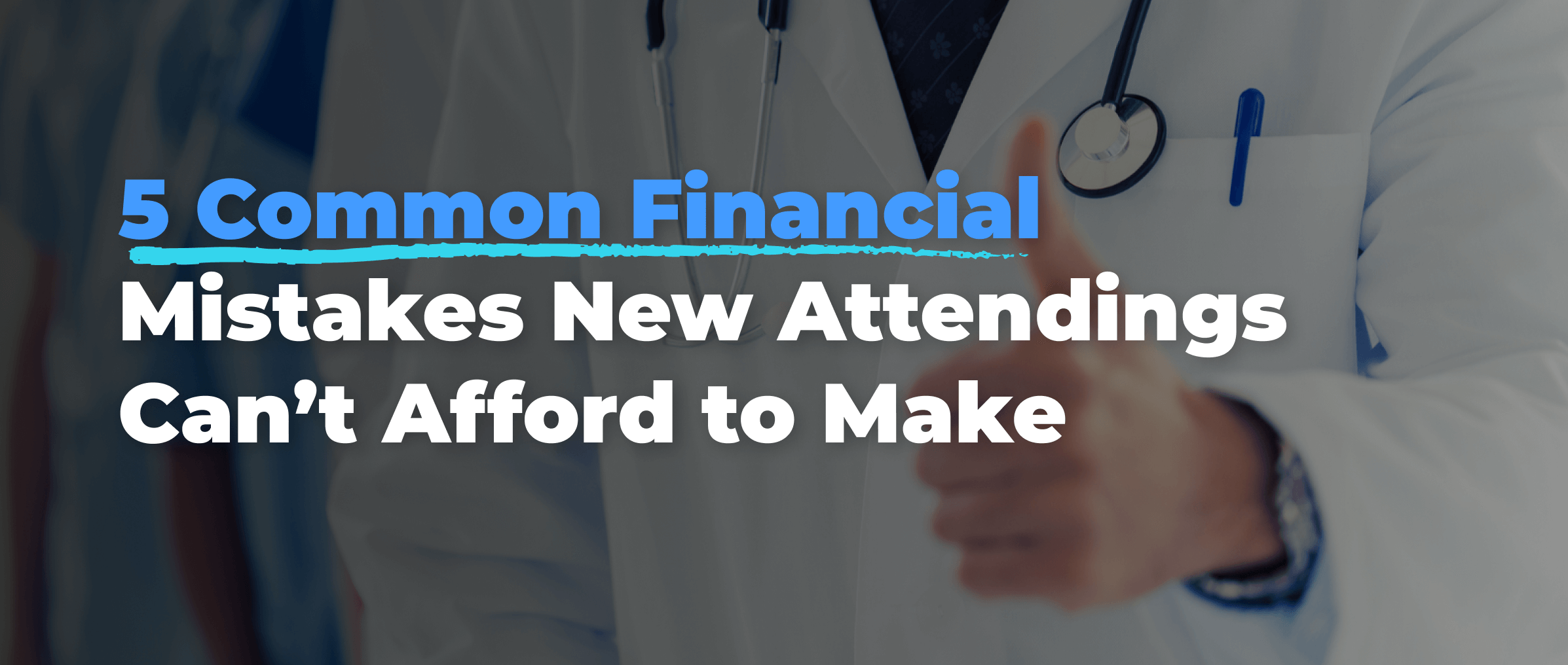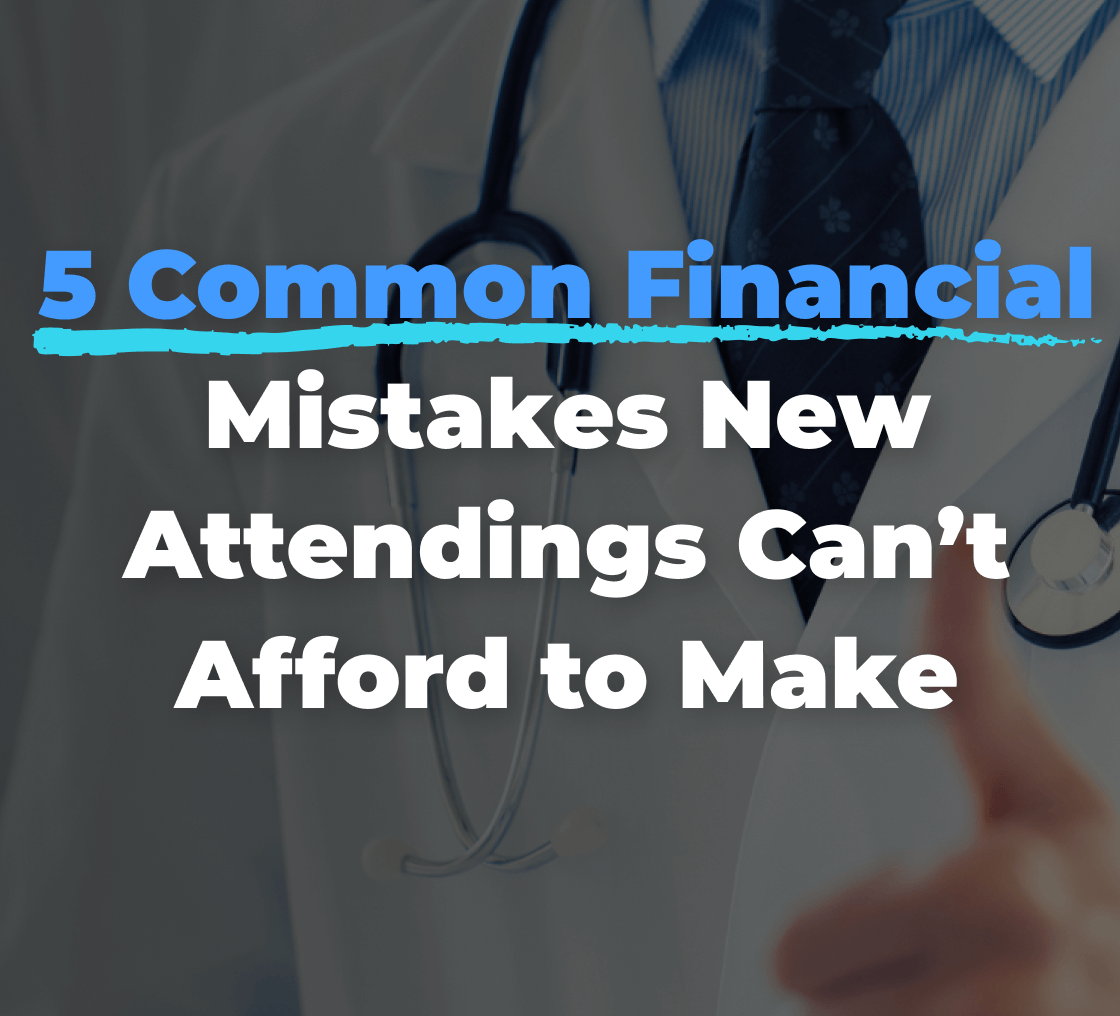


After years of grueling training and sleepless nights, you’re finally earning real money.
But the truth is:
The decisions you make in your first 1–3 years out of training will shape your entire financial future - for better or worse.
Most physicians don’t get taught this stuff.
Not in med school. Not in residency.
Because of that, they walk straight into costly mistakes: lifestyle creep, student loan missteps, tax surprises, and much, much more.
And those missteps? They can set you back years financially.
The good news?
They’re all avoidable!
In this post, I’ll walk you through 5 of the most common (and expensive) mistakes new attendings make—and exactly what to do instead.
If you’re within the first couple of years out of training, this is your cheat code to start strong, avoid regret, and build real financial security.
Let’s dive in.
1. Lifestyle Creep: The Trap of “I’ve Made It”
When Dr. Kim landed her first attending job—$260K salary plus a signing bonus—it finally felt like all the hard work had paid off.
She could breathe again.
So she did what most of us dream about after years of sacrifice: leased a Tesla, bought a cute townhome (only 5% down), and booked a trip to Bali.
Why not? She’d made it.
But six months later, things didn’t feel quite so celebratory.
Her monthly expenses—mortgage, car payment, private insurance, student loan minimums—added up to over $8,500.
And that didn’t include fun money, surprise bills, or the random life expenses that never stop showing up.
After tax withholding and maxing out her 403(b), she was left with less than $2,000 per month.
She had no emergency fund, and no savings outside retirement.
So when a surprise dental bill hit, it went straight onto a credit card.
Was she broke? Not at all. She was earning more than she ever imagined.
But she still felt stuck.
The whole reason she wanted to earn more was to gain freedom—but instead, she’d boxed herself into a lifestyle she could barely afford to maintain.
And unlike during training, there was no “big raise” coming to save the day.
What to Do Instead
If you’ve recently finished your residency, this might sound familiar.
It’s totally natural to want a few nice things. You’ve earned it.
But here’s the part most people don’t talk about:
Your first year or two as an attending is a rare window of opportunity.
We call it the Wealth Acceleration Window—that sweet spot where your income jumps, but your lifestyle hasn’t fully caught up yet.
If you can hit pause on the upgrades just a little longer, you can set yourself up for real financial freedom down the road.
Here’s how to use that window wisely:
✅ Build an emergency fund
So you’re ready when unexpected expenses hit.
✅ Pay down high-interest debt
Especially credit cards and private loans, before they snowball.
✅ Automate your investments
Let your money grow consistently without needing to think about it.
✅ Keep fixed expenses low
Give yourself breathing room and flexibility from the start.
The Bottom Line
A high income doesn’t automatically bring freedom—or happiness.
In fact, without a plan, it can trap you in a lifestyle that’s tough to unwind.
But the good news? It’s never too late to reset.
Whether you’re six months or three years into attending life, you can realign your finances and build a version of success that actually feels good.
2. Mishandling Student Loans: When “Smart” Advice Backfires
When Dr. Arora finished her fellowship, she was staring down $310K in federal student loans.
Her new job was at a well-known children’s hospital—a place that qualified for Public Service Loan Forgiveness (PSLF).
But the thought of making payments for another 10 years didn’t sit well with her.
She wanted to be done with debt fast.
That’s what people always say, right?
“Pay it off ASAP!”
So she refinanced her entire balance into a private loan: 10-year term, 5.25% interest, $3,300 per month.
At first, it felt like a boss move. She was being proactive. Responsible.
Then she had lunch with a co-worker who had the same job at the same hospital—yet was paying just $400 per month on an income-driven repayment plan… and on track to have the rest of her loans forgiven.
Dr. Arora? She’d end up paying over $100,000 more

All because she refinanced too soon.
And on top of the cost, she lost every federal loan protection:
❌ No flexibility with payments tied to income
❌ No ability to pause payments if life changes
❌ No chance at forgiveness—even though she originally qualified
She wasn’t reckless—just misinformed.
Like many doctors, she followed advice that works for most people.
But student loans for physicians are a whole different game.
What to Do Instead
Before you make any big decisions with your loans, make sure you’ve explored your options:
✅ Check your loan types and employer eligibility for PSLF
You might already be earning credit toward forgiveness without even knowing it.
✅ Understand IDR plans
These plans can lower your monthly payments and maximize long-term savings—especially in nonprofit jobs.
✅ Talk to a financial planner who understands physician loans
The right advice can save you tens (or even hundreds) of thousands.
✅ Only refinance if PSLF is truly off the table
And only when your income is steady—federal protections are often worth more than a slightly lower rate.
The Bottom Line
“Pay off your debt fast” is solid advice for most people.
But for doctors fresh out of training, it can be a six-figure mistake.
That’s why you’ve got to be careful with one-size-fits-all financial advice.
As a physician, your financial world is different—and you deserve a strategy that actually fits your life.
3. No Tax Strategy: When "Having a CPA" Isn’t Enough
When Dr. Jackson finally signed his first attending contract, he felt like he’d made it:
$345K base salary, plus another $70K from weekend side gigs.
He figured he was set. He even had a CPA handling his taxes—so everything should be good, right?
Well… not quite.
Come April, he got hit with a $44,000 tax bill, which included over $2,000 in penalties.
He hadn’t done anything reckless. He just assumed his CPA was "taking care of it."
But the reality? His CPA was only filing taxes—not planning for them.
Here’s what went wrong:
❌ His W-4 was never updated
So he wasn’t withholding enough for taxes from his main salary = $21K shortfall
❌ None of his 1099 income had taxes taken out
And he didn’t make quarterly payments = $16K owed + $2K penalty
❌ He had investment gains in a brokerage account
But no strategy to manage the tax impact = $5K bill
To cover it all, Dr. Jackson had to drain his emergency fund and hit pause on his 401(k)
contributions—a painful way to kick off attending life.
What to Do Instead (Without Becoming a Tax Nerd)
If you’re in your first few years out of residency, chances are your income jumped fast.
That’s awesome! But it also means your taxes just got more complicated.
Here’s how to stay ahead of it:
✅ Update your W-4
Ask your employer to withhold more so you don’t end up with a surprise bill.
✅ Pay quarterly taxes on 1099 income
Side gigs don’t come with automatic tax withholding—so you need to make those payments yourself.
✅ Be strategic with charitable giving
Front-loading donations into a Donor-Advised Fund (DAF) can give you a big deduction in high-income years.
✅ Max out tax-advantaged accounts
Think HSA, 401(k), and Roth contributions or conversions—they can shrink your tax bill and grow your wealth.

The Bottom Line
Just having a CPA doesn’t mean you have a tax strategy.
Most CPAs are just filling your forms—not helping you proactively plan.
If you’re not steering the ship, no one else will.
So whether you learn the basics or hire someone who does this kind of planning, being intentional about your taxes can save you thousands—and a lot of stress!
4. Delaying Investing: “I’ll Get to It Later” Can Cost You
When Dr. Patel started her first attending job, she was earning $290K and finally felt like things were coming together.
But between 12-hour shifts, moving to a new city, and getting used to a brand-new EMR system, investing just didn’t feel urgent.
She figured, “I’ll deal with that once life settles down.”
So she opened a checking and savings account, parked her money there, and got back to work.
Fast forward a year: she had over $40,000 sitting in cash.
She hadn’t touched her 403(b), didn’t open a Roth IRA, and skipped the HSA too.
Meanwhile, the stock market had one of its best years in a decade—up more than 20%.
Her money missed all of that growth. “I’ll do it later” likely cost her $8,000–$12,000.
It wasn’t fear. It wasn’t lack of knowledge.
It was just… inertia.
And it’s one of the most common—and expensive—mistakes new attendings make.
What To Do Instead (Even if You're Busy)
✅ Max out retirement accounts
Contribute to your 401(k), 403(b), or 457(b) to lower your tax bill and grow wealth long-term.
✅ Open and fund a Backdoor Roth IRA
Even if you earn too much for a regular Roth, you can still get the benefits of tax-free growth.
✅ Invest in a taxable brokerage account
Once retirement accounts are full, let your extra savings keep working for you.
✅ Automate your contributions
Set it and forget it—so investing happens, even when your schedule’s wild.
The Bottom Line
If you’re just out of residency, the best time to start investing was yesterday.
The second-best time? Today.
Because the longer you wait, the more ground you’ll have to make up—and the more likely you’ll still be working weekend shifts at 60, when you’d rather be relaxing on a beach somewhere.
Even small steps now can add up to real freedom later.
5. Thinking You’re Covered (When You’re Not)
Six months into her dream job as an orthopedic surgeon, Dr. Garcia’s life took an unexpected turn.
A car accident left her with nerve damage in her dominant hand—and just like that, surgery was off the table.
She could still see patients in clinic, but the most lucrative part of her job? Gone.
At first, she wasn’t too worried—she thought her hospital’s disability insurance would take care of her.
But when she looked into it, reality set in: The group plan only paid for total disability and capped benefits at $5,000/month.
Before the accident, her take-home had been closer to $18,000/month.
Even worse?
She could’ve bought her own private own-occupation disability policy right out of residency—while she was young and healthy—for a reasonable monthly premium.
That policy would’ve covered $15,000/month (tax-free).
Instead, she had to pivot into non-clinical consulting just to keep up with her student loans and living expenses.
What To Do Instead
✅ Get own-occupation disability insurance
Make sure your income is protected if you can’t do the specific work you were trained for—even if you can still work in some capacity.
✅ Add term life insurance if someone depends on you
It’s affordable and does the job. Skip whole life unless you have a specific reason.
✅ Add umbrella liability insurance as your net worth grows
$1M+ in coverage can protect you from lawsuits and other “what if” scenarios. It’s cheap too—just a few hundred dollars per year!
The Bottom Line
If you’re a physician, the biggest risk to your income isn’t the stock market—it’s losing the ability to do your job.
Don’t wait.
Employer disability policies usually fall short, and once something happens, it’s too late to get the coverage you actually need.
The Big Picture
You’ve spent over a decade training to take care of others. Now it’s time to take care of your financial future.
The first few years out of residency are a golden opportunity.
Get the right plan in place now, and you can build wealth faster, avoid common traps, and create real freedom for your future.
But you don’t have to figure it all out on your own.
If you’re feeling unsure where to start—or just want a second set of (expert) eyes—schedule a complimentary Connection Call with me.
As a fiduciary and physician-focused financial advisor, I’ll help you build a plan that actually works for your life and goals.
No sales pitch. Just clarity, strategy, and next steps.
👉 Click here to book your free Connection Call.
You’ve done the hard work. Now let’s make sure your money does, too.

Disclosures & Disclaimers: This content is for informational and educational purposes only and does not constitute financial, investment, or legal advice. It does not represent an offer to buy or sell any securities. Private market investments are speculative, typically illiquid, and involve a high degree of risk, including the potential loss of principal. They are generally suitable only for accredited investors and may require long holding periods and limited liquidity. Any historical performance figures mentioned are illustrative, not guaranteed, and may not reflect actual results. All investing involves risk. Before making any investment decisions, consult with a qualified financial advisor who understands your specific situation, goals, and risk tolerance.